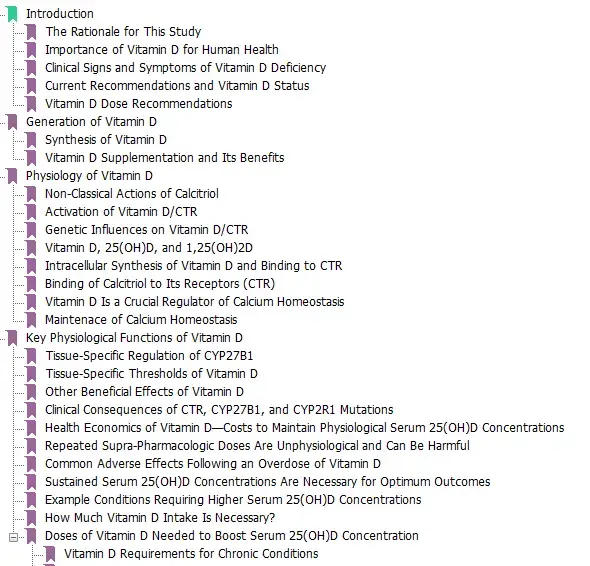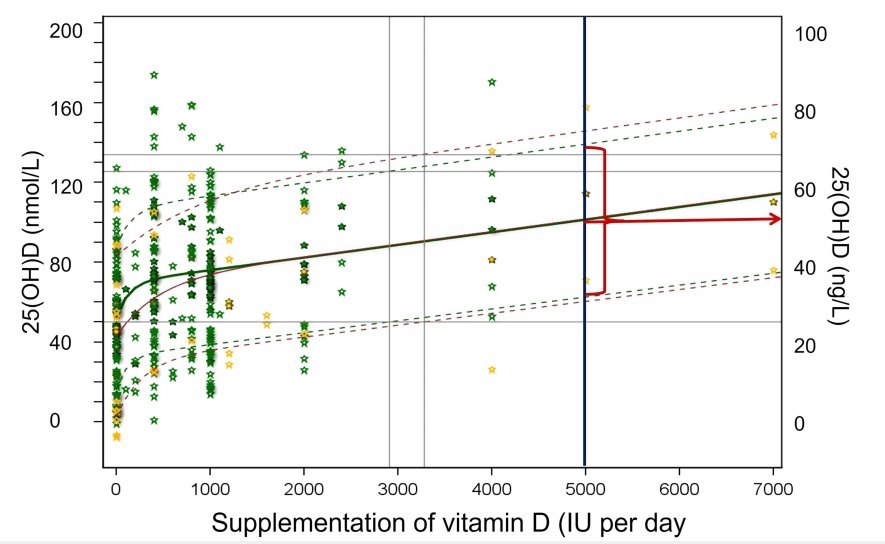Many diseases prevented if Vitamin D level higher than 50 ng -Sunil
Physiology of Vitamin D—Focusing on Disease Prevention
Nutrients 2024, 16, 1666. https://doi.org/10.3390/nu16111666
Sunil J. Wimalawansa - Cardiometabolic & Endocrine Institute, North Brunswick, NJ 08902, USA; [email protected]
Vitamin D is a crucial micronutrient, critical to human health, and influences many physiological processes. Oral and skin-derived vitamin D is hydroxylated to form calcifediol (25(OH)D) in the liver, then to 1,25(OH)2D (calcitriol) in the kidney. Alongside the parathyroid hormone, calcitriol regulates neuro-musculoskeletal activities by tightly controlling blood-ionized calcium concentrations through intestinal calcium absorption, renal tubular reabsorption, and skeletal mineralization.
Beyond its classical roles, evidence underscores the impact of vitamin D on the prevention and reduction of the severity of diverse conditions such as
cardiovascular and metabolic diseases,
autoimmune disorders,
infection, and
cancer.
Peripheral target cells, like immune cells, obtain vitamin D and 25(OH)D through concentration-dependent diffusion from the circulation.
Calcitriol is synthesized intracellularly in these cells from these precursors, which is crucial for their protective physiological actions. Its deficiency exacerbates inflammation, oxidative stress, and increased susceptibility to metabolic disorders and infections; deficiency also causes premature deaths. Thus, maintaining optimal serum levels above 40 ng/mL is vital for health and disease prevention. However, achieving it requires several times more than the government's recommended vitamin D doses. Despite extensive published research, recommended daily intake and therapeutic serum 25(OH)D concentrations have lagged and are outdated, preventing people from benefiting.
Evidence suggests that maintaining the 25(OH)D concentrations above 40 ng/mL with a range of 40-80 ng/mL in the population is optimal for disease prevention and reducing morbidities and mortality without adverse effects.
The recommendation for individuals is to maintain serum 25(OH)D concentrations above 50 ng/mL (125 nmol/L) for optimal clinical outcomes. Insights from metabolomics, transcriptomics, and epigenetics offer promise for better clinical outcomes from vitamin D sufficiency. Given its broader positive impact on human health with minimal cost and little adverse effects, proactively integrating vitamin D assessment and supplementation into clinical practice promises significant benefits, including reduced healthcare costs. This review synthesized recent novel findings related to the physiology of vitamin D that have significant implications for disease prevention.
📄 Download the PDF from Vitamin D Life
Table of Contents

10 summary points by Perplexity AI (June 2024)
- Vitamin D Metabolism :
- Vitamin D is hydroxylated in the liver to form calcifediol (25(OH)D) and then in the kidney to form calcitriol (1,25(OH)₂D), which regulates calcium and phosphorus metabolism essential for bone health.
- Broader Health Implications :
- Beyond bone health, vitamin D plays a crucial role in preventing cardiovascular and metabolic diseases, autoimmune disorders, infections, and cancer by modulating immune function and reducing inflammation and oxidative stress.
- Optimal Serum Levels :
- Maintaining serum 25(OH)D concentrations above 40 ng/mL, with an optimal range of 40-80 ng/mL, is essential for disease prevention and reducing morbidity and mortality. For optimal clinical outcomes, levels above 50 ng/mL are recommended.
- Deficiency and Health Risks :
- Vitamin D deficiency, defined as serum 25(OH)D levels below 12 ng/mL, exacerbates inflammation, increases susceptibility to infections and metabolic disorders, and is associated with higher mortality rates.
- Public Health Concern :
- Vitamin D deficiency is a widespread issue affecting over half of the global population, particularly those with limited sun exposure. This deficiency is more prevalent than iron deficiency and has significant health implications.
- Current Recommendations :
- Government-recommended daily doses of vitamin D (400-1000 IU/day) are insufficient to achieve optimal serum levels. Higher doses are necessary to maintain adequate vitamin D status and prevent various diseases.
- Clinical Signs of Deficiency :
- Symptoms of severe vitamin D deficiency include muscle weakness, bone pain, skeletal deformities, increased risk of fractures, and generalized fatigue. These symptoms often overlap with other health conditions.
- Non-Classical Actions of Calcitriol :
- Calcitriol synthesized in peripheral target cells, such as immune cells, plays a vital role in immune function, reducing the risk of infections and inflammatory responses. This intracellular synthesis is crucial for its protective actions.
- Genetic Influences :
- Genetic factors, such as mutations in the CYP27B1 and CYP2R1 genes, can affect vitamin D metabolism and lead to conditions like rickets. These genetic variations influence the body's ability to synthesize and utilize vitamin D.
- Health Economics :
- Addressing vitamin D deficiency through supplementation is cost-effective and can significantly reduce healthcare costs associated with treating diseases linked to vitamin D deficiency. The cost-benefit ratio of prophylactic vitamin D is highly favorable.
7+ Vitamin D Life pages have SUNIL in the title
The list is automatically updated
{LIST()}
>100 publications by Sunil in Google Scholar as of June 2024
Half of the people got to 50 ng with 5,000 IU daily

Note: Virtually all will get >40 ng with 7,000 IU daily (50,000 IU weekly)
Vitamin D Life - Is 50 ng of vitamin D too high, just right, or not enough contains:
{include}
82+ pages have 50 ng in the Vitamin D Life title
This list is automatically updated
{LIST()}
